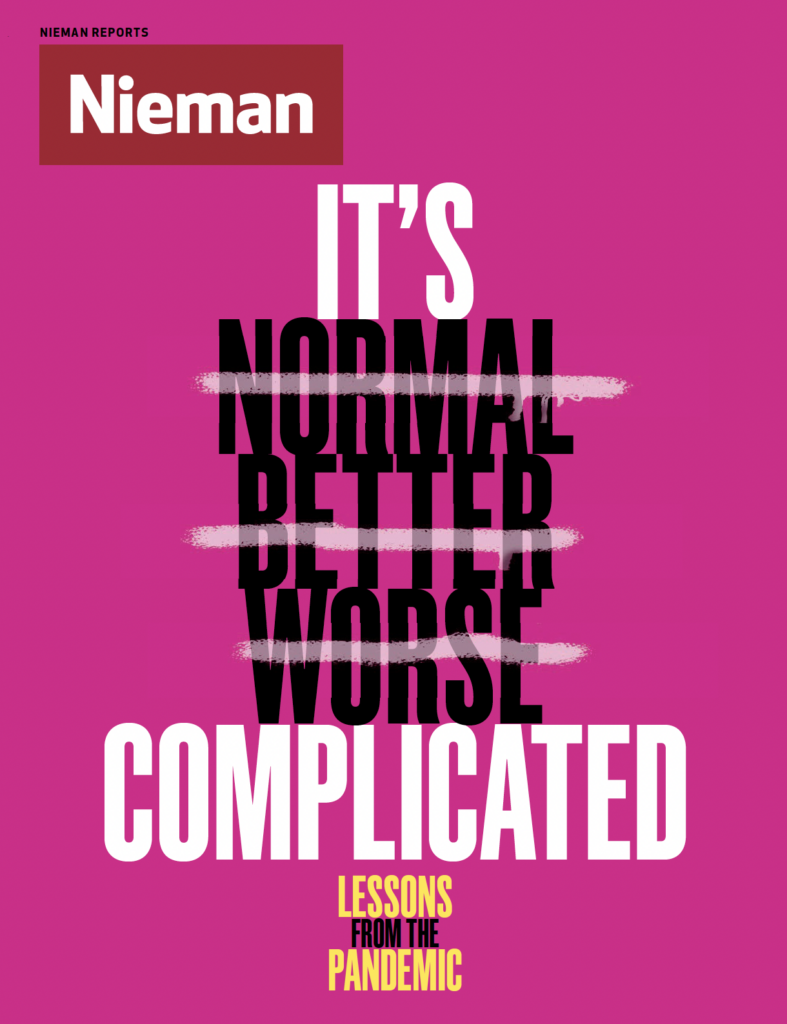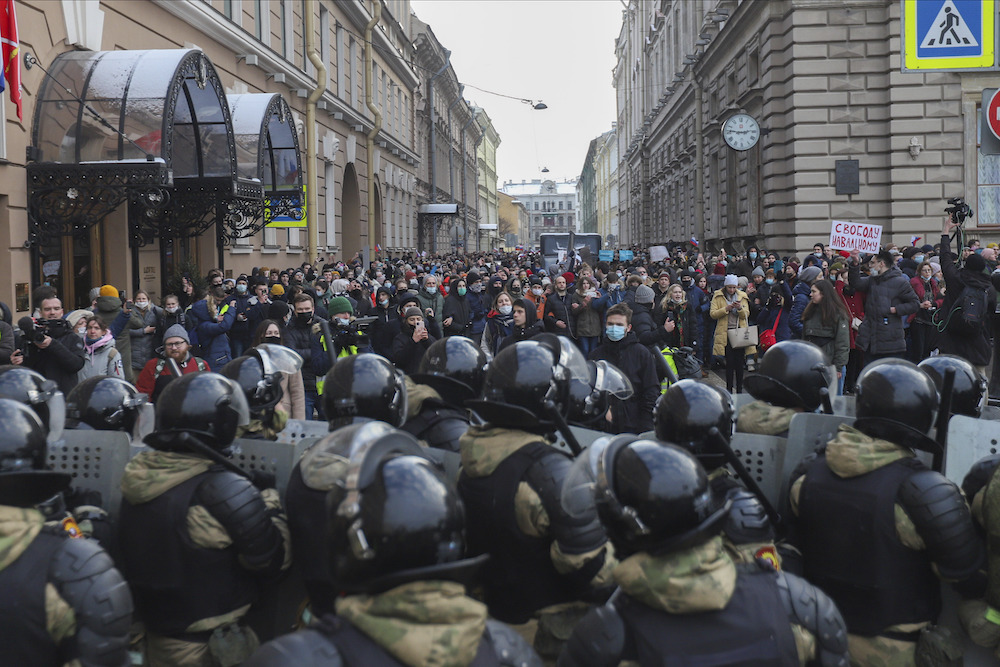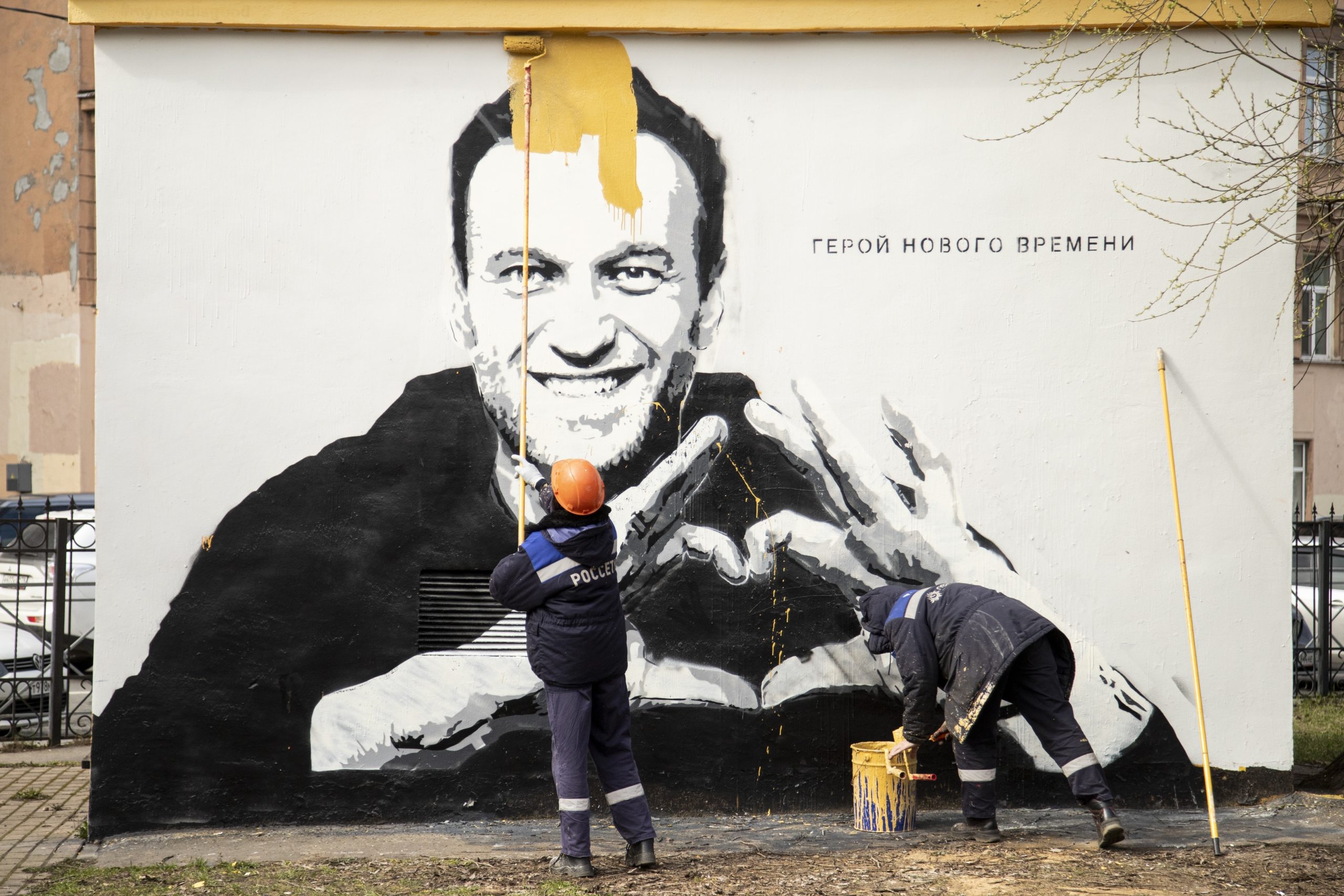
Hope that the coronavirus is finally being brought under control has prompted plans for a return to “normal.” But can, or should, journalism return to a pre-pandemic “normal?” Across newsrooms, the way we once covered education, sports, food, politics — any beat — is unlikely to be sufficient for the new moment we are entering.
What are the lasting lessons of this time? And how should we do journalism differently moving forward? These are the questions Nieman Reports explores in our essay series, Lessons from the Pandemic.
On the morning of April 29, Russian opposition leader and blogger Alexei Navalny appeared in court via video link, fighting the second in a series of legal charges filed against him since the beginning of the year. His appearance was skeletal, having just ended a 24-day hunger strike to demand adequate medical care during his imprisonment in Penal Colony No. Two (IK-2) outside Moscow, one of Russia’s harshest correctional facilities.
Upon his return to Russia in January, after recovering abroad from an assassination attempt involving Novichok poisoning, Navalny was detained and prosecuted in a hastily organized court proceeding at a local police station. Accusing him of failure to report regularly to the police while he was in a coma in Germany, the court jailed him for 30 days in the lead up to a February trial that resulted in a prison sentence of more than two years. A joint investigation by the Russian independent online newspaper The Insider, Bellingcat, CNN and Der Spiegel linked the Novichok poisoning to Russia’s Federal Security Service (FSB).
Following the sentencing, protests in support of Navalny swept the country, resulting in mass arrests unprecedented in modern-day Russia. In January and February, Russian authorities detained up to 159 journalists covering the demonstrations, according to the Glasnost Defense Foundation, a nonprofit that helps protect journalists in Russia.
But on that late April morning, Navalny was appealing another charge — insulting a World War II veteran, 94-year-old Ignat Artemenko.
Artemenko had been featured in a promotional video produced by the Russian state-run television network RT that aired in June 2020. In it, he, together with other prominent Russian personalities, encouraged viewers to vote for amendments to the constitution. Among other things, these changes would reset the clock on President Putin’s term limits, enabling him to hold the office twice more. They were approved the next month in a contested referendum.
In weekly YouTube live streams Navalny hosted until the Novichok attack, he repeatedly pointed out that the amendments had already been approved in a legal procedure outlined in the Russian constitution. In his view, the vote was a propaganda stunt to increase popular support for a decision that had already been made. Navalny criticized a number of famous actors who appeared in pro-amendment agitprop — the Soviet word for propaganda materials — in his broadcasts and on Twitter, calling them “traitors.” The statement prompted a campaign in support of the veteran, expanding from Russian state media to the personal YouTube channels of pro-Kremlin commentators.
The dual prosecutions of Navalny highlight the deep political polarization in Russia, where social media amplifies the divide. Some 42% of respondents to a February survey by the Levada-Center, a Russian independent polling organization, said they got their news through social networks. While Navalny and his Anti-Corruption Foundation (FBK) as well as independent news outlets use platforms like YouTube to disseminate investigations, social media is also increasingly rife with state-sponsored propaganda.
“There is a large, patriotic, conservative part and a small, proud, liberal opposition, but there is almost nothing in between,” says Russian independent journalist and media analyst Anna Kachkaeva of the Russian media landscape.

Yet Navalny’s success in reaching a large audience is emblematic of a new type of media consumer in Russia, and a Moscow court’s designation of his movement as “extremist” suggests the Kremlin sees Navalny and his followers as a serious threat. Social media has opened up avenues for independent journalism, providing a small but growing alternative to federal networks such as VGTRK (the All-Russian State Television and Radio Broadcasting Company), Channel One, or RT, and meeting a demand for truthful reporting.
According to the Levada-Center, only 16% of Russians trust official government information on the Covid-19 pandemic, for example.
“We saw a surge in audience last spring when we released an infographic on the coronavirus in Russia,” says Sergey Smirnov, editor in chief of the independent news outlet MediaZona, founded in 2014 by Maria Alyokhina and Nadezhda Tolokonnikova, members of the Russian punk rock band Pussy Riot.
Over the last 20 years, the space for independent journalism in Russia has shrunk significantly, due to financial pressure, state media acquisitions, and assaults on journalists. Most outlets are either controlled by the government or have been sold to pro-Kremlin businessmen. Those resistant to state pressure are confronted with oppressive information laws. These policies not only target individual journalists but also international tech giants. In April, a Moscow court fined Twitter for its refusal to delete content encouraging the Russian public to take to the streets in support of Navalny. Facebook and Google are facing similar penalties.
The pressure on political opposition and independent press has intensified. Russia’s Justice Ministry declared Latvia-based Meduza, one of the most popular online news outlets, a “foreign agent,” discrediting its operations and leading to severe financial losses. VTimes, An independent online business newspaper, recently stopped operations out of fears of prosecution after the outlet was added to that same list of “foreign agents.” Members of the student-run DOXA, the former magazine of Moscow’s Higher School of Economics, were placed under house arrest and banned from using the internet because they appeared in a video about how universities threatened to expel students if they participated in protests in support of Navalny.
The increased pressure has become the new reality for independent media in Russia. “All we can do is try to comply with all the requirements of the novel legislation,” Smirnov says. Compliance, however, can often be hard to define.
Last November, MediaZona released a story criticizing the Russian Federal Penitentiary Service (FSIN) for the limited data it released on Covid-19 in Russian prisons. Using open-source materials — as well as data from the human rights group Zona Prava — MediaZona exposed how the coronavirus spread through the penal system. In a formal request, the Russian media regulator Roskomnadzor asked the organization to remove the piece from its website. The site redacted every reference to FSIN in the text, but this did not satisfy the regulator, and Smirnov faced charges of spreading fake news. The case is currently pending.
MediaZona’s original focus was on the criminal justice system in Russia, a cause embraced by Pussy Riot’s Alyokhina and Tolokonnikova. Independent Russian newsrooms often emerge as niche outlets directly from their founders’ activism.
“It’s startling for many Western journalists to see this ‘career trajectory’ that is quite standard in Russia,” says Aric Toler, a researcher at Bellingcat who focuses on investigating conflicts related to Eastern Europe. In the 19th and 20th centuries, Russian political commentators and philosophers found creative ways to circumvent censorship.
“Now journalists stand in a position somewhat similar to that in the intellectual history of Russia,” Toler adds.
Navalny and the FBK straddle a similar line between activism and journalism. Over the last few years, Navalny and his team have used journalistic techniques to expose corruption within the Russian government. Although Navalny’s work is politically motivated, the FBK has filled a gap created by the crackdown against independent newsrooms.
That crackdown has left only a handful of traditional media outlets able to preserve editorial independence. Ekho Moskvy, which started as a small radio station in the 1990s and is now partly controlled by the Russian government, remains openly critical. Unlike newer independent websites, Echo Moskvy is not only popular among younger people but is also one of the most reputable sources of information for broader audiences.
According to editor-in-chief Alexei Venediktov, the reason the radio station still exists is that the Russian government itself needs at least one reliable source of information to stay in the loop of what is actually happening in the country. Many young Russian journalists who choose to work independently start their careers at Echo Moskvy or Novaya Gazeta, a newspaper famous for its investigative journalism and whose reporters have been repeatedly attacked and sometimes murdered since its founding in 1993.
Among online independent media, some outlets, like Meduza, have determined the only way to work is outside Russia. During the pandemic, the site has provided in-depth coverage, often exposing flaws in official death toll statistics. But its designation as a “foreign agent” has already led to the loss of most of its advertisers. The law’s primary goal is to stigmatize and marginalize targeted outlets. Prior to Meduza, Russia had applied the same law to American outlets like Radio Free Europe/Radio Liberty and Voice of America in what was considered a response to the U.S. Justice Department ordering RT to register as foreign agent.
Meduza is now required to inform readers — in the form of a label on each post, including advertisements — that the site distributes information as a foreign agent.
“We have been practically called ‘enemies of the state,’” says Meduza’s editor-in-chief, Ivan Kolpakov. “What speakers, sources, or experts would want to talk to such a media outlet? Journalism is not a crime.” The site has now turned to crowdfunding to continue operating.
Increasingly, smaller independent media struggle with legal pressure. “Our legislation is draconian. It is stupid, absurd!” says Roman Badanin, head of nonprofit investigative outlet Proekt.
Badanin launched Proekt in 2018 as an independent outlet focused on investigative journalism. It runs on public donations and Badanin compares its model to ProPublica. He has also covered the protests in support of Navalny, specifically incidents of police brutality.
Like other independent online outlets, Proekt’s audience is young, between 30 and 45, and between 80% and 85% of its traffic comes from social platforms. “It is paradoxical but both in open societies as well as in closed ones, all media equally depend on social media” to reach audiences, says Badanin.
Indeed, seeing the success of these new outlets, state-controlled media has launched sites like Octagon.Media that focus on discrediting stories from independent newsrooms, criticizing protestors, or vilifying the Ukrainian government. State broadcaster RT — initially created as part of the government’s effort to construct a positive image of Russia abroad — now also targets domestic audiences through social media, including on platforms like Telegram, where authorship and editorial control are harder to establish. RT’s coverage is often devoted to questioning the investigations published by Navalny and independent journalists.
There have also been rumors that a new state-sponsored, quasi-independent channel is in the works to counterbalance independent online TV channels like Dozhd. Launched in 2010 as a small private broadcaster with the slogan the “optimistic channel,” Dozhd’s programming encompasses everything from talk shows and panel discussions to documentaries and exposés of state propaganda. The subscription-based channel is known for its live broadcasts from protests, which it has been covering since 2011.
Dozhd extensively covered the most recent demonstrations in support of Navalny, including reports from Moscow and St. Petersburg as well as from smaller cities across the country, like Krasnodar and Perm. The reports provided details about the actual number of protesters and interviews with participants that would never be shown on official TV.
“Whenever something bad happens, the audience grows,” says the channel’s chief editor, Tikhon Dzyadko.
Independent journalists in Russia are also at personal risk. In April, operatives of the FSB, the Russian Ministry of Internal Affairs (MVD) and the Investigative Committee of Russia searched the home of Roman Anin, editor in chief of the watchdog outlet Important Stories, or IStories, and the site’s newsroom. According to Anin, the raids were part of an investigation connected to a story he wrote in 2016 for Novaya Gazeta about the connection between the head of the Russian state-run energy company Rosneft, Igor Sechin, and the St. Princess Olga yacht. Anin has been questioned several times about the story and his work as a journalist, so far only as a witness, although he and his lawyers fear he might be targeted for his journalism.
“Truthful media are listed as enemies,” Anin says.
IStories was launched during the pandemic as a watchdog journalism site that not only focuses on big investigations but also covers local stories and provides professional training for independent journalists in Russia. In its first year, it released investigations into the leadership of the FSB and Putin’s former son-in-law, Kirill Shamalov. IStories also robustly covered Covid-19, detailing, for example, how Russian authorities unlawfully fined Moscow residents, even those who were ill in bed, for violating the lockdown.
In February, MediaZona’s Smirnov was put under administrative arrest over a social media post in which he retweeted a joke pointing out the resemblance between himself and Russian rock star Dmitry Spirin. The original tweet featured a photo of the musician expressing his support for Navalny and featured the date and time of the protests. The police interpreted the retweet as a call to participate in an unauthorized demonstration, and Smirnov was found guilty of “violating the rules for holding public events.”
But such tactics can have unintended effects.
“When I was detained and then sentenced to 25 days” in administrative detention, Smirnov says, “we received a $20,000 increase in monthly donations. These donations will help expand the newsroom.”
Mykola Makhortykh contributed research and analysis to this article.



